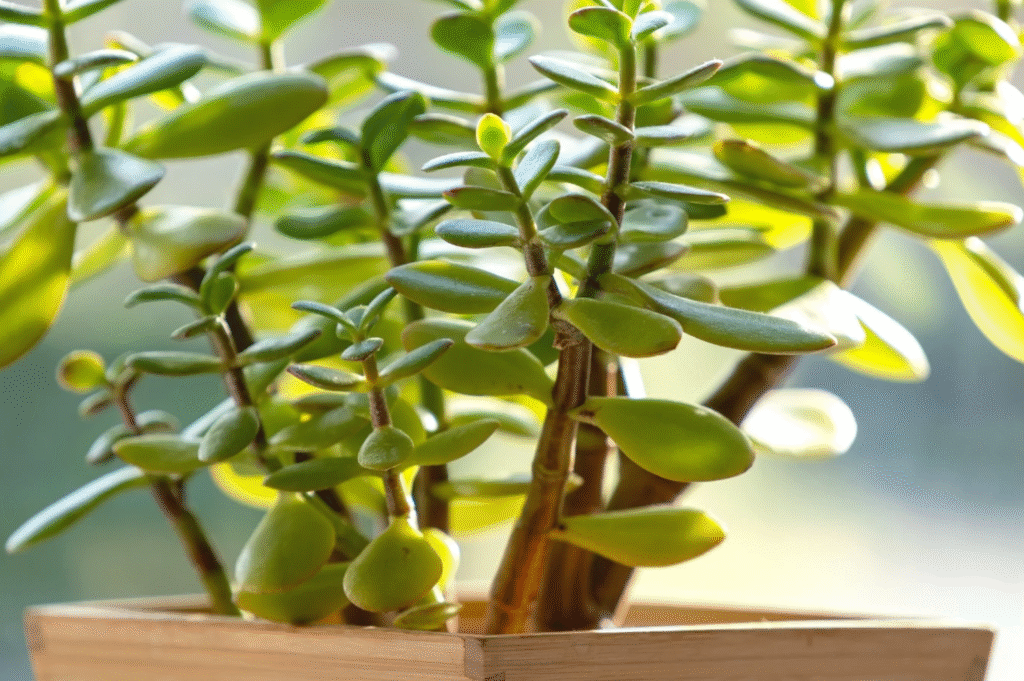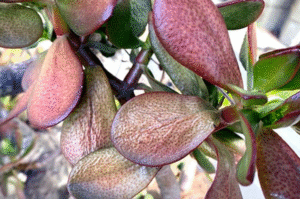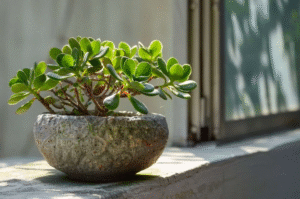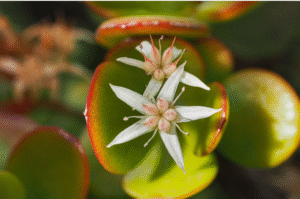Jade plants (Crassula ovata), also known as money plants or lucky plants, are popular succulents praised for their vibrant green leaves, resilience, and symbolism of wealth and prosperity. But if you’ve ever noticed a jade plant with pale leaves, slow growth, or leggy stems, chances are it’s not getting the right amount of light or proper soil.
In this article, we’ll dive deep into how much light a jade plant needs, what kind of soil is best, and how to create the perfect environment for a healthy, thriving plant.
Quick Answer: How Much Light Does a Jade Plant Need?
A jade plant needs at least 4–6 hours of bright, indirect sunlight per day to grow well. If kept outdoors, filtered sunlight or morning sun works best. Indoors, a south-facing window is ideal.
Now, let’s break it down and look at why light and soil matter so much for jade plants.
Why Light Matters for a Jade Plant
Light is essential for photosynthesis, the process plants use to create energy. For jade plants, proper light exposure does more than just support growth:
- Maintains compact shape
Without enough sunlight, jade plants stretch out and become leggy. - Enhances leaf color
Red tips on leaves develop when exposed to strong light, a sign of a happy jade. - Encourages blooming
Older, well-lit jade plants may even produce star-shaped white or pink flowers.
Best Light Conditions for a Jade Plant
Ideal Lighting
- Bright, indirect sunlight for most of the day
- 4–6 hours of natural light (morning sun preferred)
- Near a south or west-facing window indoors
Avoid This
- Direct harsh afternoon sun can scorch leaves
- Low light areas – causes weak, leggy growth
- Fluorescent-only lighting – not ideal unless it’s a grow light
Tip for Indoors:
Rotate the plant weekly to ensure even growth. Jade plants tend to grow toward the light source, so turning them prevents lopsided growth.
What If Your Jade Plant Isn’t Getting Enough Light?
Here’s how to tell if your jade plant needs more light:
- Leaves turning pale green or yellow
- Leggy or stretched stems
- Slower growth or leaf drop
- No red leaf tips
Solution:
- Move your plant closer to a sunny window.
- Use a grow light (LED full spectrum) for at least 8–12 hours daily if you have poor natural light.
Can Jade Plants Survive in Artificial Light?
Yes, jade plants can survive in artificial light, but not just any light will do. Use high-quality LED grow lights that provide full-spectrum light, mimicking natural sunlight.
Recommended Grow Light Features:
- 4000–6000K color temperature
- 8–12 hours/day exposure
- Adjustable brightness settings
A jade plant kept under grow lights can thrive, but natural light is always preferred when available.
Outdoor vs Indoor Lighting for Jade Plants
| Factor | Indoor | Outdoor |
| Light Intensity | Moderate to bright indirect light | Full sun to partial shade |
| Sun Exposure | Best near sunny windows | Morning sun or filtered afternoon |
| Risk | Low (scorching is rare) | Risk of sunburn in hot afternoon sun |
What Happens If a Jade Plant Gets Too Much Light?
While jade plants love sunlight, too much direct sun (especially in hot climates) can damage them.
Signs of Sunburn:
- Brown or black patches on leaves
- Wrinkled, dry foliage
- Leaves dropping
If this happens, relocate your plant to a shadier spot and prune damaged leaves.
Soil Needs for Jade Plants: Just as Important as Light
Light alone isn’t enough; your jade plant also needs the right soil to support healthy roots and drainage.
What is the Best Soil for Jade Plants?
Jade plants prefer well-draining, slightly sandy soil. Succulent or cactus mix is ideal.
Key Qualities of Good Jade Soil:
- Fast-draining
- Low in organic matter (no peat-heavy mixes)
- Slightly acidic to neutral pH (6.0–7.0)
DIY Soil Mix Recipe:
- 2 parts cactus mix or coarse sand
- 1 part perlite or pumice
- 1 part potting soil (low peat content)
This mix provides the perfect balance of aeration and drainage that prevents root rot, a common jade plant killer.
What Happens If Soil Is Too Moist?
Jade plants are succulents, which means they store water in their leaves. If the soil stays wet for too long:
- Roots rot easily
- Leaves become soft or mushy
- Foul odor may develop
- Fungus gnats may appear
Drainage is everything. Use pots with drainage holes and avoid overwatering.
Best Practices: Combining Light and Soil for Success
Here’s how to ensure your jade plant gets the perfect balance of light and soil:
- Place the plant in bright, indirect sunlight
- Use a well-draining soil mix
- Water only when the top 1–2 inches of soil is dry
- Avoid placing jade in cold or dark corners
- During winter, reduce watering and provide as much light as possible
Final Thoughts
The secret to a thriving jade plant lies in the balance between adequate sunlight and perfect soil. With 4–6 hours of light daily and fast-draining soil, your jade will stay healthy, compact, and vibrant all year round.
Whether you’re a beginner or a seasoned succulent lover, following these simple care tips will keep your jade plant happy and maybe even blooming.






